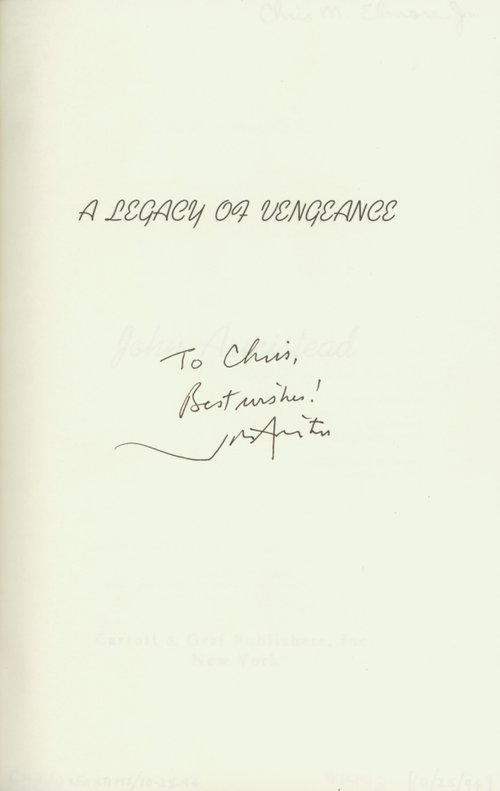Exhibits
Introduction
Confronting Mississippi’s Violent Past in Fiction
Until recently, most authors with Mississippi settings have ignored the state’s most murderous legacy -- slavery, Jim Crow lynchings, and civil rights assassinations. With few exceptions, black characters merely added local color to the southern setting while their dialect and idioms provided comic relief. Like the servant class in English crime novels of the Golden Era, African Americans provided the necessary backdrop of toil to support the leisure class upon which the writers focused. Black victims of violence were never the corpse under investigation, and while real life southern white communities almost reflexively assumed the guilt of those African Americans in close proximity to a crime, authors of pre-1960s mysteries seldom considered their black characters as serious suspects. With the exception of Prentiss Ingraham’s “Darkie Dan,” black Mississippi detectives, professional or amateur, were nonexistent. In the past few decades, however, mystery authors have begun placing their works in the context of the state’s tumultuous past as well as integrating African-American characters more fully into their plots.

Shepard Rifkin & John Armistead
During the first weekend of Freedom Summer 1964, three civil rights workers – Michael Schwerner, James Chaney, and Andrew Goodman – disappeared. Authorities ultimately discovered their bodies outside of Philadelphia, Mississippi. Shepard Rifkin’s 1970 novel The Murderer Vine is loosely based upon these three murders. In this fictional version, the wealthy father of one of the victims offers a New York detective one hundred thousand dollars to execute each of the five suspected killers, including the local sheriff.


Born in Mobile, Alabama, John Armistead received his B.A. from Mississippi College in 1963 and a Masters in Divinity from Golden Gate Baptist Theological Seminary three years later. For fifteen years, he served as the pastor of Calvary Baptist Church in Tupelo. In 1994, at the age of fifty-two, Armistead published his first book, A Legacy of Vengeance. When someone driving an old white Pontiac kills four local men, Sheriff Grover Bramlett of “Chakchiuma” County suspects a connection to civil rights events thirty years earlier, and race relations in the community become strained yet again. Told by a deacon that another such book would cause him to lose his pulpit, Armistead resigned his pastorate and took a position as religious editor of the Tupelo Daily Journal. He has since published two other Sheriff Bramlett mysteries as well as two novels for juveniles.


P.J. Parrish
P.J. Parrish is the pseudonym of two sisters: Kristy Montee, a Florida journalist, and Kelly Montee, a former manager of a Philadelphia, Mississippi casino and now a resident of Southaven, Mississippi. Dark of the Moon (1999) was the first in a series of novels featuring their biracial protagonist Louis Kincaid. Set in the 1980s, Kincaid relocates from Detroit to his Mississippi hometown of “Black Pool” in order to be with his dying mother. Soon after obtaining a job as a deputy sheriff, a shallow grave discloses the body of a young, black man lynched twenty years earlier. Kincaid’s investigation meets resistance from the sheriff and local leaders. The second Parrish novel, Dead of Winter (2001), received an Edgar nomination, while the third, Paint It Black (2002), garnered a Shamus nomination.

Rick Guy
Rick Guy worked as a photojournalist with several newspapers in his home state of Louisiana before landing a position with the Jackson Clarion-Ledger. His photographs have appeared in People, Newsweek, and Time. Inspired to turn his hand to fiction after reading John Grisham’s The Firm, Guy published his first novel, Kuklos, in 2000. “Kuklos” is a Greek term for “circle,” and was also the original name of the Ku Klux Klan. Sent to cover the discovery a body in a thirty-year old car found submerged in a lake, journalist Alan Scott eventually uncovers a conspiracy to hide the KKK memberships of some of Mississippi’s highest ranking officials -- including the governor in the midst of a presidential campaign.


Stephen Hunter
In Pale Horse Coming (2001), the time is 1951, and Sam Vincent, a former Arkansas prosecutor, has accepted a job to investigate a disappearance at Thebes State Penal Farm (Colored) in “Thebes,” Mississippi. Before leaving, he takes the precaution of informing Earl Swagger, a sergeant in the Arkansas State Police and an ex-Marine, of his plans. Both men eventually embark on a journey of destruction and survival. Pale Horse Coming is just one of a series of works bestselling novelist Stephen Hunter has written about the Swagger family. Between 1971 and 1996, Hunter worked as a movie critic for the Baltimore Sun. He currently serves on the staff of the Washington Post. In 2003, Hunter won a Pulitzer Prize for Criticism.


Susan Wittig Albert
Bloodroot (2001) is the tenth volume in the China Bayles series by Susan Wittig Albert about a former criminal attorney who retires from her profession to run a Texas herb shop. The title of each mystery is an herb that symbolically represents the book’s theme. In Bloodroot, a telephone call from her mother in “Chicory” forces the entrepreneur to return to Mississippi and confront a plantation legacy she had long since repudiated:
After I entered high school and began thinking seriously about such matters, I began to hate the plantation and everything it stood for. I declared that I would no longer imagine myself in any way as a product of the Old South, with its brutal treatment of slaves, its contradictory veneration and exploitation of white women, its utter disregard for the dignity of human life. Like other women of my era, I decided to repudiate the patriarchal past and reinvent myself as a new kind of Southern woman, free to make her own choices, build her own life, write her own personal declaration of independence.
In the end, she not only discovered the identity of a killer, but an entirely new branch on her family tree.
Susan Wittig Albert. Bloodroot. New York: Berkeley Prime Crime, 2001.
John Armistead. A Legacy of Vengeance. New York: Carroll & Graf Publishers, 1994. Inscribed title page.
Rick Guy. Kuklos. Madison, MS: GrayStone Publishing, 2000. Signed title page.
Stephen Hunter. Pale Horse Coming. New York: Simon & Schuster, 2001. Signed title page.
P.J. Parrish. Dark of the Moon. New York: Kensington Books, 1999.
Shepard Rifkin. The Murderer Vine. New York: Dodd, Mead & Company, 1970. Title page.
-- The Murderer Vine. Greenwich, Conn.: Fawcett, 1971.
